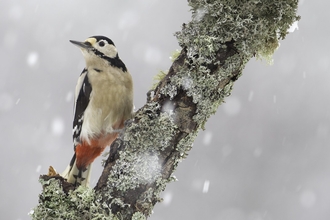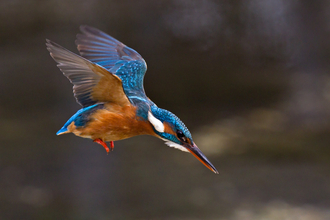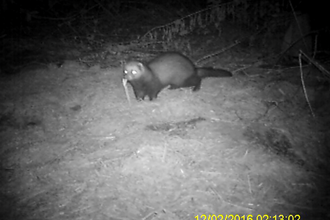Wild reindeer are a widely distributed species, found in the tundra and taiga regions of Greenland, Scandinavia, Russia, Alaska and Canada. In North America they’re called caribou, but they’re the same species. During the last ice age their range extended through much of northern Europe. The word ‘reindeer’ has nothing to do with harness for pulling sleighs – it comes from the Old Norse for deer, ‘hreinn’.
Talking about Rudolph
Reindeer (Rangifer tarandus) on upland pleateau of Cairngorm mountains, Cairngorms National Park, Scotland, UK - Mark Hamblin/2020VISION
Adaptations for very cold climates include fur everywhere, on the nose and the soles of the feet – and it’s special fur. The coat is in two layers, and each hair is hollow, providing extra insulation. A coat made from reindeer skin can keep you warm in temperatures down to minus 50o centigrade!
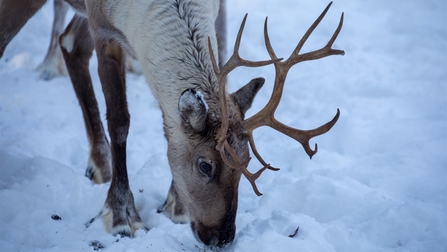
©Ninara/flickr
The reindeer’s nose is also cold-proofed. In addition to its fur covering, the nasal passages contain elaborate folds which are richly supplied with tiny veins. These warm the air breathed in and then cool it as it’s exhaled, preventing both chilling and heat loss. The furry nose allows the reindeer to browse on lichen and moss beneath the snow, which may be the only available food in winter.
The hooves are also adapted for lichen-hunting. In winter they become hard so the beast can break through frozen snow and ice. The toes are widely splayed to act as snowshoes, and a tendon in the feet makes a clicking sound as the reindeer walks, which means the herd can hear each other and keep together in blizzards.
You can see a reindeer is a quite remarkable creature – but what’s all this about flying? Do Santa’s reindeer, led by Rudolph, really pull his sleigh full of gifts through the sky?
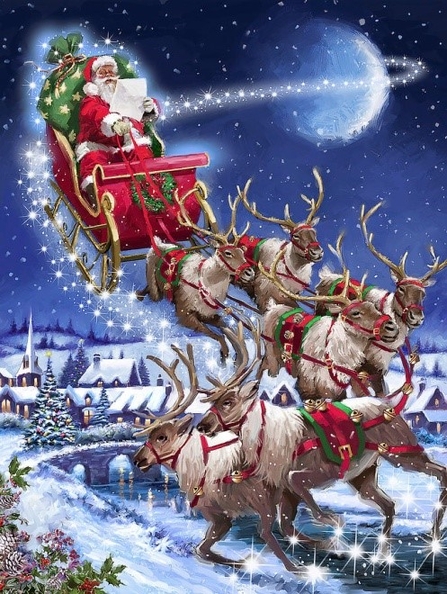
Well, for a start, the traditional image shows all the reindeer fully antlered, so they must be females. Reindeer are the only deer species where males and females alike have antlers, but the males (bulls) cast them in November/early December after the rut. Females retain theirs until their calves are born in May.Northern European folklore tells of the Deer Mother flying through the longest, darkest night of the Winter Solstice to carry back the light of the sun in her antlers, so there is an ancient tradition of flying reindeer.
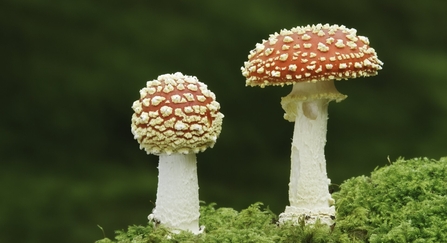
Fly Agaric (Amantia muscaria) Guy Edwardes/2020VISION
There is also a theory that the flying imagery comes from reindeers’ partiality to fly agaric fungus (Amanita muscaria), a powerful hallucinogen whose consumption makes the deer leap about – seen against the low winter sun of the northern latitudes they might well have been thought to be flying, especially as shamans (those herding) of the reindeer also used fly agaric as part of their rituals. The shamanic spirit quest is described as feeling like flying in a reindeer drawn sleigh up through the smoke-hole of the yurt and across the skies.
Fly agaric is highly poisonous but reindeer are able to eat it safely as the bacteria in their gut can process the toxins. The drug is excreted, unaltered, in the urine which was collected and drunk by the shamans. Incidentally, the shamanic costume is red with white fur trim...
Sometimes it’s better just to believe the magic – or you might find just a lump of coal in your stocking!


